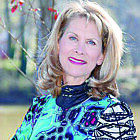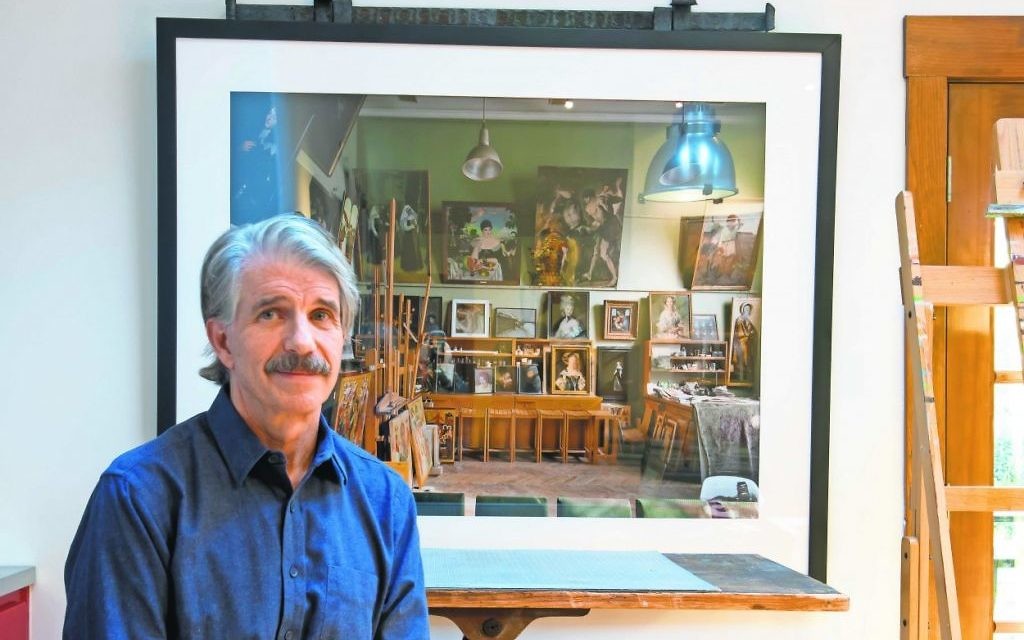Chai Style Interiors: Hands-On Perspective
Frank Joseph applies surgical precision to photography, collection
Renowned hand surgeon Frank Joseph collects and creates historical, technical and magical photography. Joseph has traveled the world and his own back yard to hold his breath, to get the perfect click, and to know where to stand to capture the light (or not) in his own work.

Controversial photographer Robert Mapplethorpe said, “The more pictures you see, the better you are as a photographer.” And Joseph sees.
Get The AJT Newsletter by email and never miss our top stories Free Sign Up
Joseph, a refined Henry Winkler look-alike, sits alongside his Tibetan terrier, Dylan, to share his vision of this fine art niche and how he is evolving within it.
—
Jaffe: Photography has changed so much in a decade, not to mention a generation. Were you interested in photography as a child?
Joseph: I grew up in Queens, N.Y., in very humble surroundings. I was interested in photography but had very rudimentary equipment since my parents were modest, hardworking, German pre-World War II immigrants. After college and medical school, I rekindled my interest in photography. Of course, now photography is very computer-intensive.
Jaffe: Photography transcends the constraints of language and culture. Much of your work is done visiting foreign lands. Is that your preferred palette?
Joseph: I have sought out some exotic locations, like Morocco, Greece, Italy, even Austin, Texas. One more memorable shoot was at the Burning Man festival in Reno. Then again, I have photographed icicles in my own back yard. Alfred Stieglitz said, “Wherever there is light, one can photograph.”
In the future, I’d like to shoot in Japan because of the color and energy there. You could say that some venues make it more inspirational and challenging.
Jaffe: Ah, Burning Man (held annually in late August) is the “evolved baby boomer’s Woodstock,” a network of dreamers and doers. It touts Viktor Frankl’s quote “What is to give light must endure burning.”

Joseph: In one regard, Burning Man, which I attended in 2014, may have been my turning point. There I began having more fun and not overthinking my work. Spending an entire week in a creative environment allowed me to evolve artistically. I came back from the playa with a deeper understanding of myself as a photographer and thousands of pictures of Burning Man participants and sunsets.
Jaffe: Describe some of your most treasured collected photographs on this grand studio office wall.
Joseph: I collect black-and-white photography that has historical meaning to me. This “March on Selma” captures a pivotal moment in the ’60s, the era in which I grew up. I particularly cherish a photograph of a sleeping Robert Frank by Elliott Erwitt. Both men are Jewish, and Frank in particular is celebrated for his book “The Americans.” In 1959 Frank set out across the U.S. to film the high and low strata of our society. He took 28,000 shots, 83 of which are in this book. During the course of shooting his book, he was thrown in jail in Arkansas because he was Jewish and because authorities found “Russian-sounding” names among his correspondence. This type of photography will stand the test of time and is one of the most important photography books in the last 100 years.
The female figures are by German-born Ruth Bernhard, whom Ansel Adams hailed as the all-time greatest nude photographer.
On a lighter note, I love the portrait of Bianca Jagger by Jeannette Montgomery Barron, an Atlanta native, well known in the New York art world for documenting the ’70s and ’80s. I also love this series of photographs of 1950s pinup model/actress Bettie Page. I jokingly call Page the early Katy Perry. Another series I have collected over time features small prints by Japanese artist Yamamoto Masao.
The large-scale print by Andrew Moore is of an art studio in Russia and coincidentally mimics my own studio in setup and lighting.
Jaffe: Arbus, Frank, Erwitt, Bernhard, Stieglitz, Eisenstaedt — many of the greats were Jewish. Can you connect the dots on what particular ethos tapped into that?

Joseph: As a nomadic people, we are familiar with and feel compelled to document the human condition. Moreover, Jewish people often feel like outsiders. Helmut Newton, another famed Jewish photographer, is well-known for his work in fashion photography. Few people realize that he grew up as a Jew in Berlin and, in fleeing the Holocaust, ended up in Singapore. It was this mix of experiences that led him to be a visionary artist.
Jaffe: Your master bedroom has some multilayered clever photography. What were you thinking in here?
Joseph: Over the bed is a photograph by Todd Selby, shot of a bottle of sleeping pills prescribed to Marilyn Monroe. What drew me to this is the prescriber is Dr. Finger, tongue and cheek for my profession. “The Berlin Kiss 1996” (Harry Benson) is reminiscent of one of my favorite uncles in Germany. Again, the historical significance resonates.
Jaffe: Is Atlanta a prime city in which to be a photography collector?
Joseph: Indeed it is. Much of what you see here is from the Jackson Gallery of Fine Art in Buckhead. Elton John has the best private photography collection in the world. That certainly puts Atlanta on the map in terms of sophistication and availability of highly sought-after works.

Jaffe: How do you combine medicine with your artistic side?
Joseph: It’s a good thing that photography is not as technical as surgery, but it can be complicated. Lights, colors and shapes require a studied and precise eye. My work has evolved over the last 15 years. Patience has contributed to that. Medicine is more regimented vs. my artistic, looser, more creative side.
Jaffe: You collect Buddhas?
Joseph: Their appeal relates to being in the moment, which is paramount in photography, and much about letting go. I collect robots too. Call me a combo nerd-artist.
Final thought: Diane Arbus said, “Photography is the secret about a secret. The more it tells, the less you know.” Thank you, Dr. Joseph, for sharing your secrets.
Photos by Duane Stork





comments